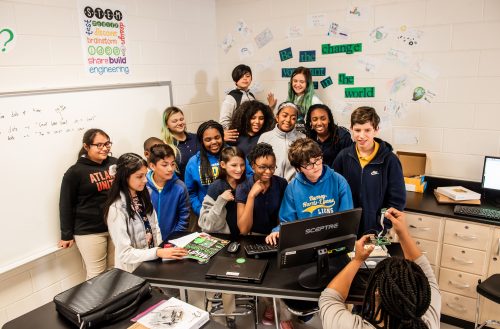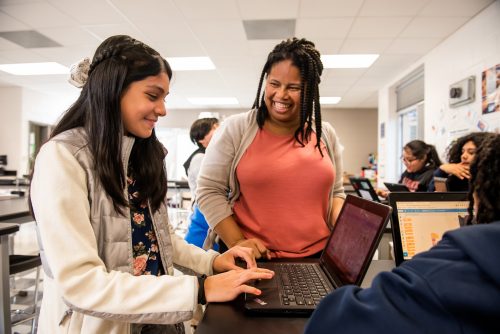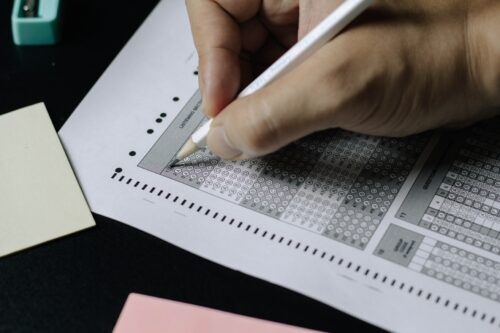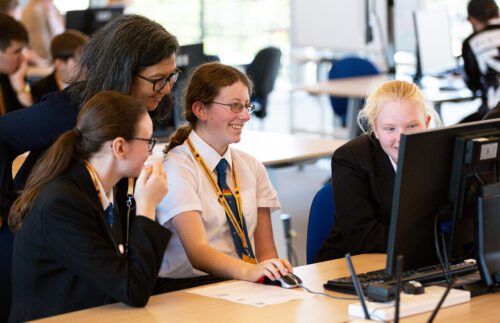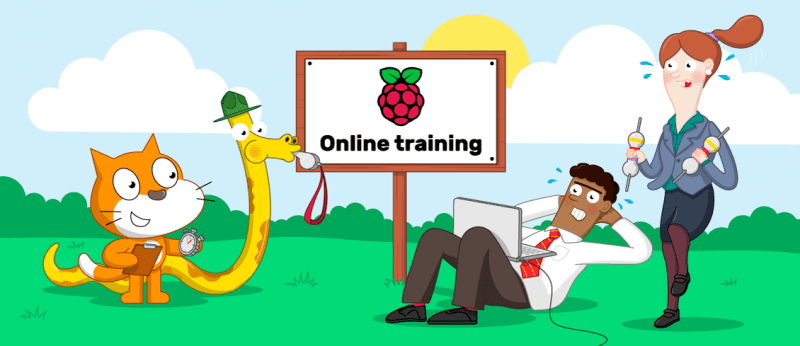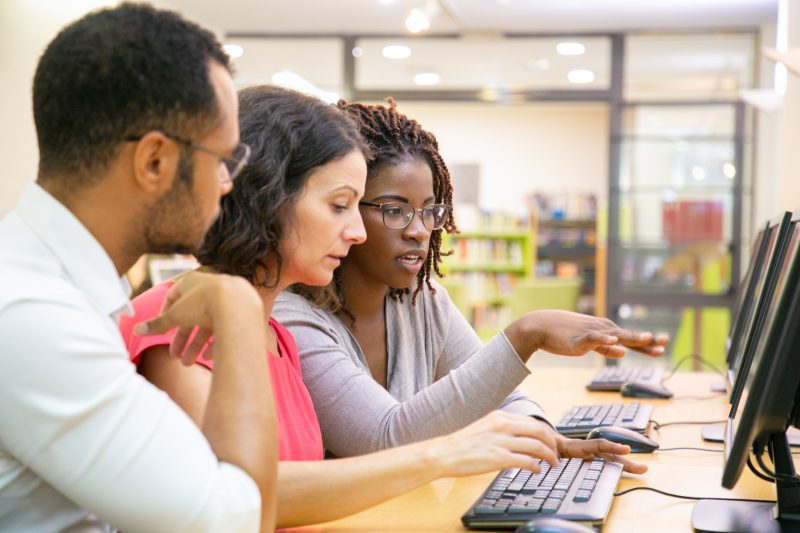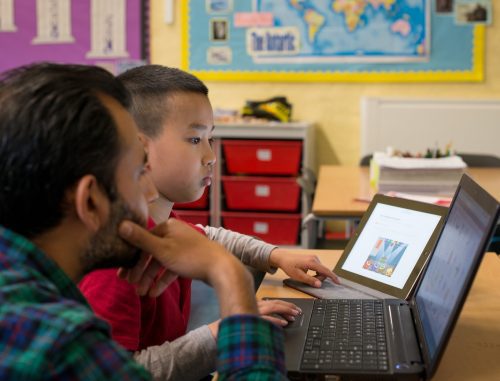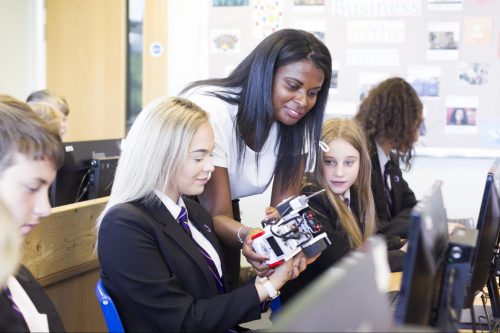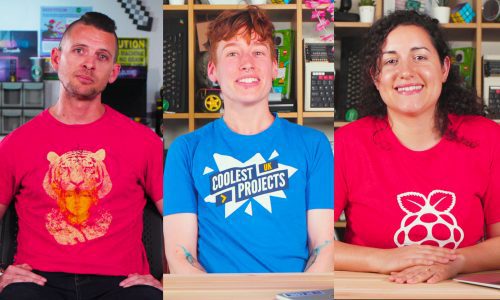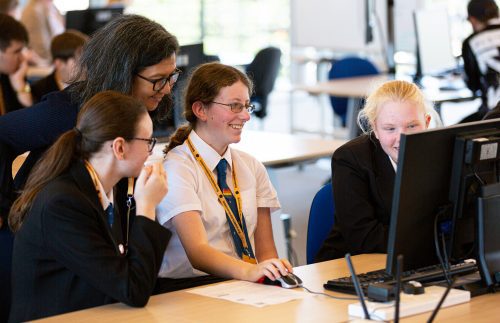Schlagwort: National Centre for Computing Education
-

Gender Balance in Computing — the big picture
Reading Time: 7 minutesImproving gender balance in computing is part of our work to ensure equitable learning opportunities for all young people. Our Gender Balance in Computing (GBIC) research programme has been the largest effort to date to explore ways to encourage more girls and young women to engage with Computing. Commissioned by the Department…
-

Using relevant contexts to engage girls in the Computing classroom: Study results
Reading Time: 6 minutesToday we are sharing an evaluation report on another study that’s part of our Gender Balance in Computing research programme. In this study, we investigated the impact of using relevant contexts in classroom programming activities for 12- to 13-year-olds on girls’ and boys’ attitudes towards Computing. We have been working on Gender…
-

Non-formal learning activities: What do we know and how do we apply it to computing?
Reading Time: 6 minutesAt the Raspberry Pi Foundation, we engage young people in learning about computing and creating with digital technologies. We do this not only by developing curricula for formal education and introducing tens of thousands of children around the world to coding at home, but also through supporting non-formal learning activities such as…
-

A peer instruction approach for engaging girls in the Computing classroom: Study results
Reading Time: 7 minutesToday, we are publishing the third report of our findings from our Gender Balance in Computing research programme. This report shares the outcomes from the Peer Instruction project, which is the last in our set of three interventions that has explored teaching approaches to engage more girls in computing. The premise of…
-

A pair programming approach for engaging girls in the Computing classroom: Study results
Reading Time: 10 minutesToday we share the second report in our series of findings from the Gender Balance in Computing research programme, which we’ve been running as part of the National Centre for Computing Education and with various partners. In this £2.4 million research programme, funded by the Department for Education in England, we aim…
-

I belong in computer science
Reading Time: 6 minutesAt the Raspberry Pi Foundation, we believe everyone belongs in computer science, and that it is a much more varied field than is commonly assumed. One of the ways we want to promote inclusivity and highlight the variety of skills and interests needed in computer science is through our ‘I belong’ campaign.…
-

A storytelling approach for engaging girls in the Computing classroom: Pilot study results
Reading Time: 7 minutesWe’ve been running the Gender Balance in Computing programme of research since 2019, as part of the National Centre for Computing Education (NCCE) and with various partners. It’s a £2.4 million research programme funded by the Department for Education in England that aims to identify ways to encourage more girls and young…
-

Creating better online multiple choice questions
Reading Time: 5 minutesIn this blog post we explore good practices around creating online computing questions, specifically multiple choice questions (MCQs). Multiple choice questions are a popular way to help teachers and learners work out the next steps in learning, and to assess learning in examinations. As a case study, we look at some data…
-

Expanding our free Isaac Computer Science platform with new GCSE content
Reading Time: 4 minutesWe are delighted to announce that we’re expanding our free Isaac Computer Science online learning platform in response to overwhelming demand from teachers and students for us to cover GCSE content. Thanks to our contract with England’s Department for Education which is funding our work as part of the National Centre for…
-

Supporting teachers and students with remote learning through free video lessons
Reading Time: 2 minutesWorking with Oak National Academy, we’ve turned the materials from our Teach Computing Curriculum into more than 300 free, curriculum-mapped video lessons for remote learning. A comprehensive set of free classroom materials One of our biggest projects for teachers that we’ve worked on over the past two years is the Teach Computing…
-

How teachers train in Computing with our free online courses
Reading Time: 4 minutesSince 2017 we’ve been training Computing educators in England and around the world through our suite of free online courses on FutureLearn. Thanks to support from Google and the National Centre for Computing Education (NCCE), all of these courses are free for anyone to take, whether you are a teacher or not!…
-

How we are helping you with computing teaching methods
Reading Time: 3 minutesOne aspect of our work as part of the National Centre for Computing Education (NCCE) is producing free materials for teachers about teaching methods and pedagogy in computing. I am excited to introduce these materials to you here! Teachers are asking us about teaching methods Computing was included in the national curriculum…
-

Our approach to developing progression for teaching computing
Reading Time: 4 minutesPart of our work in the consortium behind the National Centre for Computing Education (NCCE) is to produce free classroom resources for teachers to deliver the Computing curriculum to students aged 5–16 in England. Our Director of Educator Support Carrie Anne Philbin describes how we define and represent progression in these resources.…
-

Gender Balance in Computing programme opens to all schools in England
Reading Time: 5 minutesAfter launching our Gender Balance in Computing programme this April, we have been busy recruiting for two trials within a small group of schools around England. Today, we are opening general recruitment for the programme. This means that all primary and secondary schools in England can now take part in the upcoming…
-

Say hello to Isaac Computer Science
Reading Time: 2 minutesWe are delighted to co-launch Isaac Computer Science, a new online platform for teachers and students of A level Computer Science. Introducing Isaac Computer Science Introducing the new Isaac Computer Science online learning platform and calendar of free events for students and teachers. Be the first to know about new features and content…
-

It’s GCSE results day!
Reading Time: 6 minutesToday is GCSE results day, and with it comes the usual amount of excitement and trepidation as thousands of young people in the UK find out whether they got the grades they wanted. So here’s a massive CONGRATULATIONS from everyone at the Raspberry Pi Foundation to all the students out there who…
-

‘Gender Balance in Computing’ research project launch
Reading Time: 4 minutesI am excited to reveal that a consortium of partners has been awarded £2.4 million for a new research project to investigate how to engage more girls in computing, as part of our work with the National Centre for Computing Education. The award comes at a crucial time in computing education, after…
-

A world-class computing education
Reading Time: 4 minutesI am delighted to share some big news today. The Raspberry Pi Foundation is part of a consortium that has secured over £78 million in government funding to make sure every child in every school in England has access to a world-leading computing education. National Centre for Computing Education Working with our…

